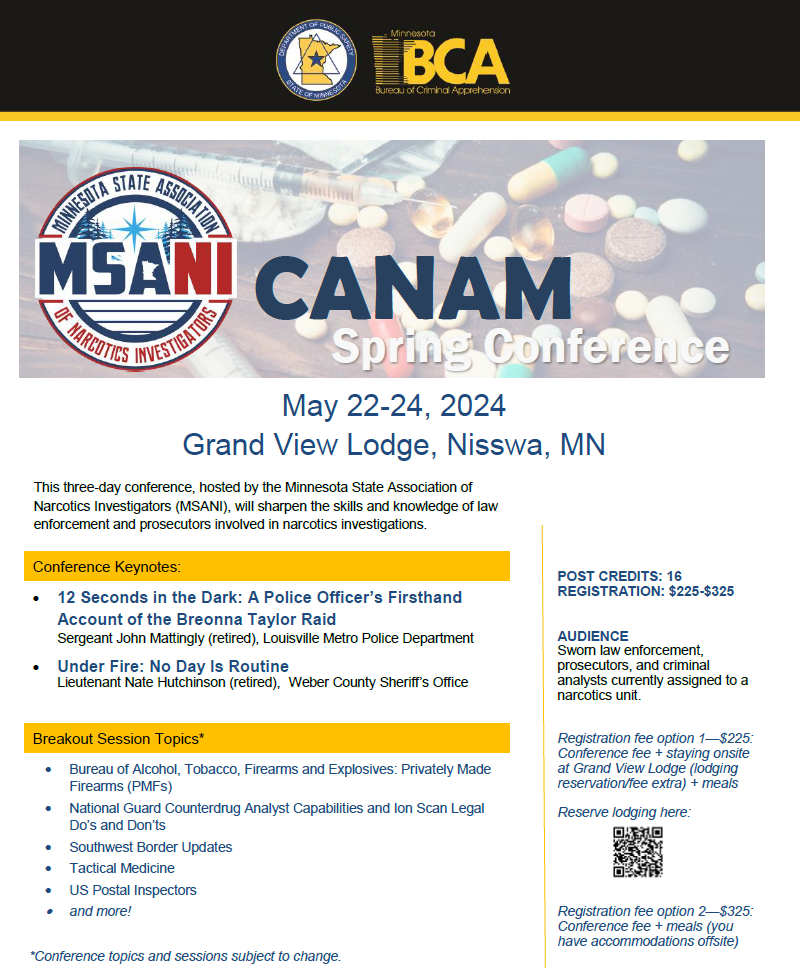See you all this week in Nisswa!
Category Archives: Drug Legalization
Effects of Drug Legalization
2025 MNOA Gun Raffle

North Central HIDTA Training
CanAm Lodging
Lodging is now available!
TF Commanders: Click here to reserve cabin lodging at Grand View Lodge
Individuals: Click here to reserve lodging at Grand View Lodge
Minnesota Marijuana Hospital-Treated Poisonings for Children Under 4 Increased by 733% Over the Past Six Years
CanAm Agenda Published!
Registered users can see the full agenda here: 2024 CanAm Agenda
Recriminalizing drugs; Oregon offers a cautionary tale
CanAm 2024

CanAm 2024 Registration is Live!
Registration for Lodging and Conference are live today.
BOTH are necessary for attendance; Lodging is through Grand View and the Conference/Training registration is through BCA.